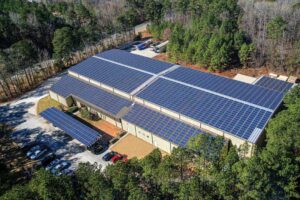
McElroy Metal—headquartered in Bossier City, La.—started its solar journey in 2013 when the company added a 500-kW system to their Peachtree City, Ga., manufacturing facility.
From that first facility, McElroy cottoned on to something special. It has now eight facilities with solar panels—with three completed in the last year alone. We recently spoke with senior vice-president Ken Gieseke to learn more about the company’s solar journey. “The reason we have eight facilities now is they have all had a good return on investment [ROI] for us,” says Gieseke.
“After putting solar on [the Peachtree facility] and seeing the results we achieved, we started looking at our other facilities,” he says.
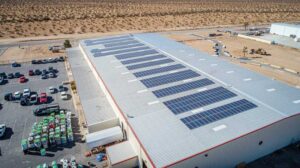
“Metal roofing is really the best substrate host product for solar panels,” says Gieseke. “One of the best things about metal roofing is, you are putting [solar panels] on a product that has a long lifespan. You do not have to take the solar off, replace a roof, and put the solar panels back on.”
Gieseke says solar is important these days, partly because of the power grid overload on some parts of the country. Also, incentive play a very important role in the growth of solar. The federal government, utilities, states, and some cities have incentives, he says, so tying all those things together is where companies can get an ROI.
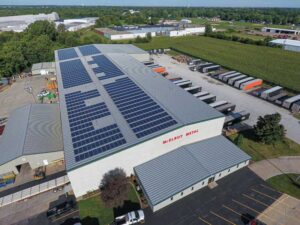
“If it wasn’t for those incentives, the ROI would be extended a lot further out, and it may not make sense to add solar,” he says. “We typically look for a five-year payback period. Some of our [facilities are] a little bit more than five years, some a little less.”
The opportunities
Aside from an ROI for building owners, solar is a great business opportunity for roofing contractors. It’s a good way, Gieseke says, for more progressive contractors that are looking to differentiate themselves from other contractors. “For a roofing contractor to get involved in something that’s progressive, it can get them some new business.”
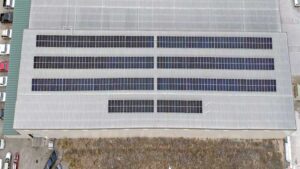
Unfortunately, solar on roofing is not as common as it could be, according to Gieseke. “There are a lot of rooftops out there that don’t have solar that are ideal candidates.” In fact, according to a report from Wood Mackenzie and Station A, just 3.5 percent of commercial buildings in the U.S. have solar panels on their roofs.
In addition, metal roofing is the best substrate to add solar panels. “With any roofing system, the fewer holes you put into that roof, the better,” says Gieseke. “Using clamps to attach solar panels on standing seam metal roofs allows the solar system to be installed without putting holes into the metal roof. Instead, the clamp attaches to a standing seam and the solar panels are then attached to the clamps with brackets or rails.”
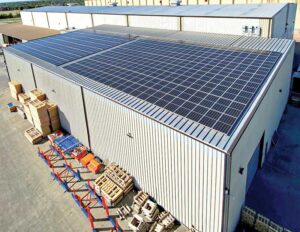
This is key for roofing. “You are not penetrating a roof. Anytime you can avoid penetrating a roof, you are stopping a potential leak.”
The future
Gieseke thinks the future is “very bright” (no pun intended) for solar. He shares that government incentives will likely continue to propel the growth of solar applications. “Some of the bills in Congress have been incentivizing more solar.” Without the incentives, he says, solar paneling can be costly, increasing the payback period. (For more information about incentives, go to the Database of State Incentives for Renewables & Efficiency website at dsireusa.org. It provides a list of the incentives by state.)
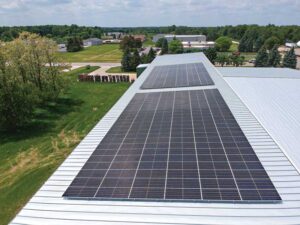
“It appears the U.S. is going to continue to want to support solar growth,” he says. “If they do, that bodes well for the metal roofing industry because metal roofing continues to be recognized as a great host substrate for solar. Metal roofing is a long-term roof.”
The key
The key, of course, is education. “It is important to know what you can do,” he says. “A lot of people, when they need a new roof, are putting a new roof on without thinking about putting solar on. We are trying to educate more contractors about the value of adding solar to their capabilities.”
| By the numbers
Implementing solar panels is a formidable task, but the truth is in the numbers. Here are a few stats from McElroy Metal’s eight facilities with solar paneled roofs in the following locations: Adelanto, Calif.; Ashburn, Texas; Clinton, Ill.; Lockhart, Texas; Marshall, Mich.; Merkel, Texas; Peachtree City, Ga.; and Sunnyvale, Texas. |
Annual Environmental Savings
Source: McElroy Metal |
McElroy’s last facility, in Lockhart, Texas, was a brand-new facility. “We just opened that up in October of last year and, based on our previous experiences, put solar on it right away.”
Most of the roofs in McElroy’s solar portfolio were reroofs. “Probably our most dramatic is Peachtree City. The whole roof is covered with solar panels. We even added a carport to the parking lot, to optimize the solar output,” he says.
The Peachtree City facility was an exception. The roofs on McElroy’s other seven facilities are not completely covered with solar panels. “Some of that is based on the incentives. Some utilities put a cap on how much you can put on. For example, if they only incentivize 150 kW, it does not make sense to put on more than that because you are wasting money.”
Gieseke does encourage contractors to consider solar and offers these tips.
Do not be intimidated
“Reach out to manufacturers,” says Gieseke. “You do not need to be a solar expert to do this. You just need to know the high-level view of solar and then find a solar contractor to partner with.”
Think about new business
“A lot of roofers are specializing in the commercial and industrial segment. If they are calling on a factory or a building owner, adding solar to a reroof project can turn the project from a strictly capital expense to an income stream. Educating a building owner that their new roof can generate an ROI versus an expense is very powerful.”


